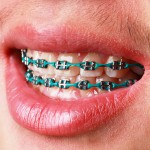
Achieving tooth movement during orthodontic treatment require the application of light forces to teeth. The application of these forces is often associated with pain which is reported to occur in between 70-90% of patients with severity ranging from slight discomfort to throbbing pain. The aim of this Cochrane review was to assess the effects of non-pharmacological interventions to alleviate pain associated with orthodontic treatment.
Methods
Searches were conducted in the Cochrane Oral Health’s Trials Register,Cochrane Central Register of Controlled Trials (CENTRAL), Medline,Embase, EThOS, ClinicalTrials.gov and the World Health Organization International Clinical Trials Registry Platform without restrictions.
Randomised controlled trials (RCTs) comparing a non-pharmacological orthodontic pain intervention to a placebo, no intervention or another non-pharmacological pain intervention were considered. Split-mouth and cross-over trials were excluded. Standard Cochrane data collection and analysis methods were used.
Results
- 14 RCTS involving 931 patients were included
- 1 study was considered to be at low risk of bias, 6 at unclear risk and 7 at high risk.
- Interventions assessed included:
- low-level laser therapy (LLLT) (4 studies);
- vibratory devices (5 studies);
- chewing adjuncts (3 studies);
- brain wave music or cognitive behavioural therapy (1 study) and
- post- treatment communication in the form of a text message (1 study).
- 12 studies involved self-report assessment of pain on a continuous scale
- 2 studies used questionnaires to assess the nature, intensity and location of pain.
- 2 studies (118 patients) of LLLT were combined providing low-quality evidence that LLLT reduced pain at 24 hours by 20.27 mm (95%CI; -24.50 to -16.04, P < 0.001; I2 = 0%). LLLT also appeared to reduce pain at six hours, three days and seven days.
- Results for the other comparisons assessed are inconclusive as the quality of the evidence was very low.
- Adverse effects were not measured in any of the studies.
Conclusions
The authors concluded
Overall, the results are inconclusive. Although available evidence suggests laser irradiation may help reduce pain during orthodontic treatment in the short term, this evidence is of low quality and therefore we cannot rely on the findings. Evidence for other non- pharmacological interventions is either very low quality or entirely lacking. Further prospective research is required to address the lack of reliable evidence concerning the effectiveness of a range of non-pharmacological interventions to manage orthodontic pain. Future studies should use prolonged follow-up and should measure costs and possible harms.
Comments
Orthodontic treatment is common as is pain from undergoing treatment so pharmacological and non-pharmacological interventions are used to manage this pain. Non-steroidal anti-inflammatory drugs (NSAIDs) are the most commonly used pharmacological agent. However, they do have adverse effects and some may be unwilling or unable to use them. Consequently, effective non- pharmacological approaches would be helpful. While 14 RCTs could be included in the review they assessed 5 different interventions providing insufficient evidence, although there was low-quality evidence to suggest that LLLT may help control short-term orthodontic pain. As the authors note most of the studies were short term and pain can occur through a course of orthodontic treatment which could be as long as two years. There was also no data on adverse effects or costs so more high quality studies are needed.
Links
Primary paper
FlemingPS,StrydomH,KatsarosC,MacDonaldLCI,CuratoloM,FudalejP,PandisN. Non-pharmacological interventions for alleviating pain during orthodontic treatment. Cochrane Database of Systematic Reviews 2016, Issue 12. Art. No.: CD010263. DOI: 10.1002/14651858.CD010263.pub2.
Other references
Cochrane Oral Health Group Blog: Lasers may help to reduce pain in orthodontic treatment
Dental Elf -11th May 2011
Analgesics for pain experienced by patients having orthodontic treatment

[…] post Pain during orthodontic treatment: non-pharmacological interventions appeared first on National Elf […]